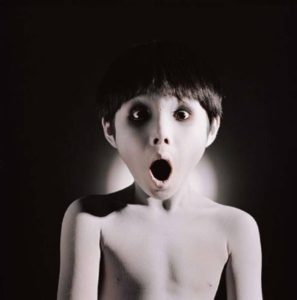It, Little Evil, Friend Request, Flatliners, Happy Death Day, Jigsaw…
These are some names of horror movies that are coming out soon. Some of you may be thrilled and just can’t wait to watch them. On the other hand, if you’re not a huge fan of horror movies, you may be puzzled about why people would pay money to put themselves in nightmares. But horror movies certainly do more than just scaring you.
In fact, horror movies are great to watch if you want to understand diverse cultures without having to sit down and study by reading books. If you’re someone who condemns horror movies because they “lack authenticity and intellectual content,” you’ll be surprised by how much you can actually learn from them. As a South Korean national and a long-time horror film aficionado I thought it might be interesting to look at horror narratives from three very different cultures: American, Japanese, and Korean.
1. American

Zombie, mutated animal, alien, ghost, vampire, mummy, you name it. One huge characteristic and strength American horror movies have in common is that there is no definitive set in terms of characters. One way to understand this would be the diversity that exists in US. People from various countries with interesting backgrounds live together. I guess growing up with exposure to various cultures, directors are more open with working with foreign story plots and incorporating unique traditions. One cliché example would be Bram Stoker’s Dracula(1992), which was based on a novel written by an Irish author, Bram Stoker and was directed by an American film director, Francis Ford Cappola.
Another crucial feature of American horror films is religion. Horror and religion may not seem to get along quite well. But if you think about it, they are very closely connected. In a recently screened film, Annabelle: Creation(2017), ‘religion’ is used as a tool to fight back the evil. If you have seen the movie, you’ll most definitely remember the scene where Annabelle’s father holds up a cross as he encounters the evil spirit and gets all of his fingers crushed. The Bible and God’s words are depicted as weapons to fight against evilness.

2. Japanese
Japanese horror is a very popular genre not only in Japan but around the world. There is great number of Hollywood’s remakes’ of Japanese horror films too.
Just like many American horror films incorporate meaning of a cross and bible in story plots, influence of religious belief is evident in Japanese horror films as well. Shinto, indigenous religious beliefs and practices of Japan, is closely connected to Japanese people’s attitude and values especially how they think about ‘death’. I won’t go too deep into what Shinto is all about because there are several different types. But one thing to remember is that according to their belief, a dead body is anticipated as dishonorable once a soul leaves the body. With that, Shinto tradition tends to view dead bodies and death negatively. So a dead body itself is a huge threat and an object of terror in Japanese culture.
This would explain why one of the most commonly appeared character in Japanese horror movies is a ghost not a monster or a vampire. For instance, in Ju-On(2002), one of the most famous horror film in Japan, Kayako is a vengeful ghost that seek revenge by basically killing everyone who comes to live in her apartment. Her son, Toshio, is a ghost as well. Considering that he is a ghost, he has a cute face and meows like a cat. And less of the computer graphics were done to make them ‘look’ scary compared to Hollywood films. In fact, it’s the story plot and the fact that they are ‘dead’ that make the film horrifying
3. Korean

Currently, Korean horror movies seem to follow the trends of other countries. But a few years ago, when the horror genre started to get popular in Korea, all horror films shared the same setting- high school.
One of the most famous horror series in Korea is Whispering Corridors1-5. I have no idea why the English title is as such but in Korean, the title means ‘ghost stories at girls’ high school,’ which I think is far from the translated version. Each episode offers different themes that are very critical of Korean educational system. For instance, Whispering Corridors1 deals with the issue of outcasts at school and excessive competition for college entrance exams. Here, classmates are not friends but competitors that one needs to get rid of. The source of horror usually is a high school student who commits suicide or is murders by her friends but will then return as a haunting ghost to avenge.
A unique characteristic of Korean horror films is the concept of ‘han,’ which is often described as culturally bound syndrome that refers to a collective feeling of oppression and isolation. Simply put, it is a mixture of every bad feeling such as bitterness, resentment, sadness and so on. With that, many Korean horror films deal with ghosts who wish to fulfill their wish even after they die, which may be taking revenge, protecting beloved one, or other wishes.


One thought to “Watch Horror Movies, Master New Cultures!”
This writing was impressive for me. It was nicely writen.
Thank you for the author! Thanks
Comments are closed.